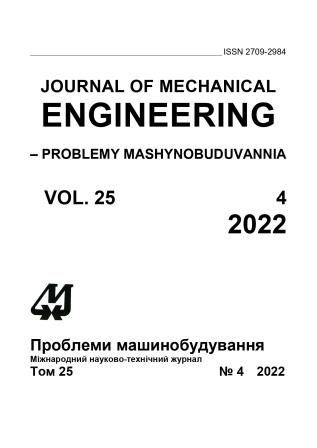Method of Solving Geometrically Nonlinear Bending Problems of Thin Shallow Shells of Complex Shape
Abstract
A new numerical analytical method for solving geometrically nonlinear bending problems of thin shallow shells and plates of complex shape is given in the paper. The problem statement is performed within the framework of the classic geometrically nonlinear formulation. The parameter continuation method was used to linearize the nonlinear bending problem of shallow shells and plates. An increasing parameter t related to the external load, which characterizes the shell loading process, is introduced. For the variational formulation of the linearized problem, a functional in the Lagrange form, defined on the kinematically possible movement speeds, is constructed. To find the main unknowns of the problem of nonlinear bending of the shell (displacement, deformation, stress), the Cauchy problem was formulated by the parameter t for the system of ordinary differential equations, which was solved by the fourth order Runge-Kutta-Merson method with automatic step selection. The initial conditions are found from the solution of the problem of geometric linear deformation. The right-hand sides of the differential equations at fixed values of the parameter t, corresponding to the Runge-Kutta-Merson scheme, were found from the solution of the variational problem for the functional in the Lagrange form. Variational problems were solved using the Ritz method combined with the R-function method, which allows to accurately take into account the geometric information about the boundary value problem and provide an approximate solution in the form of a formula - a solution structure that exactly satisfies all (general structure) or part (partial structure) of boundary conditions. The test problem for the nonlinear bending of a square clamped plate under the action of a uniformly distributed load of different intensity is solved. The results for deflections and stresses obtained using the developed method are compared with the analytical solution and the solution obtained by the finite element method. The problem of bending of a clamped plate of complex shape is solved. The effect of the geometric shape on the stress-strain state is studied.
Downloads
Published
Issue
Section
License
Copyright (c) 2023 C. М. Склепус

This work is licensed under a Creative Commons Attribution-NoDerivatives 4.0 International License.
All authors agree with the following conditions:
- The authors reserve the right to claim authorship of their work and transfer to the journal the right of first publication of the work under the license agreement (the agreement).
- Authors have a right to conclude independently additional agreement on non-exclusive spreading the work in the form in which it was published by the jpurnal (for example, to place the work in institution repository or to publish as a part of a monograph), providing a link to the first publication of the work in this journal.
- Journal policy allows authors to place the manuscript in the Internet (for example, in the institution repository or on a personal web sites) both before its submission to the editorial board and during its editorial processing, as this ensures the productive scientific discussion and impact positively on the efficiency and dynamics of citation of published work (see The Effect of Open Access).

